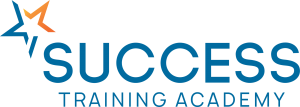Vocational Education and Training (VET) work is one of the biggest industries in Australia today. Formally recognised by the national government as its own sectoral body, the VET sector has its own national-level certifications for various types of work falling under the VET umbrella. A couple of the occupations that are regulated under the VET sector are vocational trainers and assessors, who are certified by the nationally recognised TAE40116 Certificate IV in Training and Assessment.
Considering that the occupational field professions account for 44.6% of Australia’s 2016 employment figures (of which includes manufacturing (6.4%) and retail trade (9.9%)), and is continuing to grow every year, the VET sector is important in implementing training from the worker level to ensure the growth and development of these industries.
This means that trainers and assessors are in an in-demand occupation. This brings us to the regulating certifications, of which the Certificate IV of Training and Assessment is one.
The TAE40116 Certificate IV in Training and Assessment supersedes the TAE40110, the previous version of the certification that professionalises the vocational trainer/assessor occupation. The work of trainers and assessors include the practical training of apprentices and students in a variety of occupational fields, such as trades and crafts. As well, some of the work involved in the VET sector are: the organisation and management of training activities and events, the assessment of such activities, events, and persons involved in such activities and events as suits the purposes of a given company or organisation, and other processes that relate to the previously mentioned work descriptions.
All of this information brings us to the question of accessibility: when, where, and how can those interested in pursuing work in the VET sector as a trainer or assessor enrol for the certification and its training course?
The certification and its related course training are handled by Registered Training Organisations (RTOs), which can be found all over Australia. RTOs handle training programs and courses such as the TAE series, as well as many others including Food Safety Supervisor, RMLV, and RSA certification and coursework. These courses are delivered in many methods, of which the primary ones are through face-to-face and online.
There are benefits and disadvantages to these methods of delivery.
The online delivery – also known as distance delivery – is done through the internet, with course assignments sent through in packets for the course student to accomplish. The assignments are then submitted back through the same method. Communications between trainer and trainee are done over video call, audio call, or through digital text correspondence. The correspondence continues until the course is completed.
Online delivery is ideal for prospective course takers who are unable to access the physical offices of RTOs for reasons such as geographical location or disability. Coursework can be done at any time convenient to the course taker, and can be completed at the course taker’s own pace, provided they finish within the maximum period they’re allowed to finish the course. Online delivery is also relatively cheaper, as there’s no physical learning material to account for. The downside to online delivery, however, is the relative unpredictability of real-time support, which can be important for course takers who find themselves struggling or having some difficulty with the coursework contents There’s also the concern of web connectivity, which can be unreliable at best in some locations.
On the other hand, there’s the face to face delivery. The coursework is delivered via the traditional classroom setting, with some RTOs allowing for one-on-one consultations and discussions as part of real-time support. Coursework is assigned during the scheduled lecture days, and are submitted on a later schedule. The sessions run until course completion, after which a culminating program is also held with fellow course completers.
The benefits of face-to-face delivery are that they’re reliable, given that they’re held during fixed schedules and at fixed locations. They also have a more rigid structure and timetable, which, in most cases, means that course takers can expect to finish the course and gain their certification on a set date. The downside, of course, is that because face-to-face delivery is inflexible with its schedule and location, not all of the prospective course takers can attend, whether it’s because of day-to-day obligations such as work, or disability, or living in an area that doesn’t have a local RTO. Face-to-face sessions are also more expensive compared to online delivery, not counting the cost of travel and miscellaneous expenses.
With all of this information outlined, prospective course students can make an educated decision on whether the course is suitable for them, and what course delivery is ideal for their needs as well.
The VET sector has a lot of potential for growth, which isn’t stalling at any time soon. Take the certification today – and change lives tomorrow.
